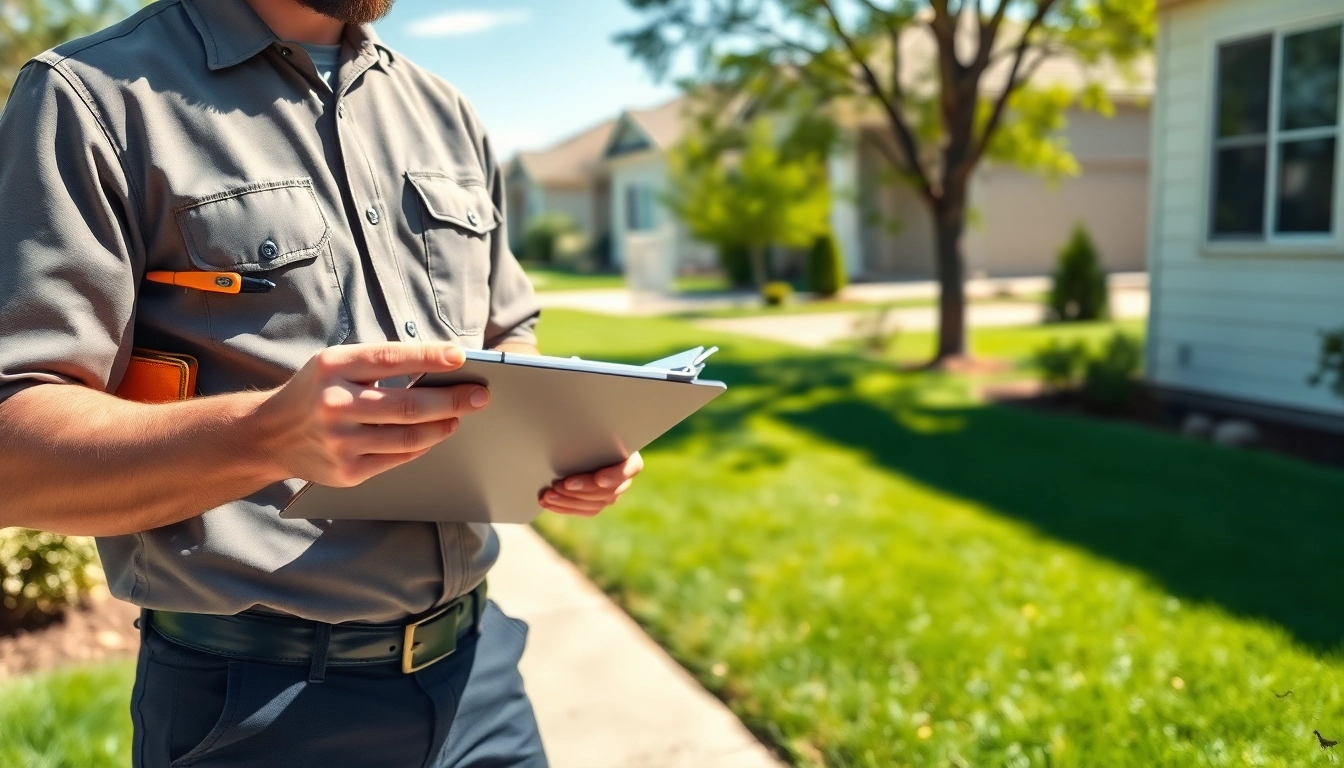Understanding the Importance of Pest Control
Pest control is an essential service that protects homes, health, and property from various pest-related issues. Both homeowners and renters are often concerned about pests, as they can affect the comfort and safety of living spaces. Proper pest control not only maintains environmental balance but also ensures that families can thrive without the threat of disease-carrying pests.
What is Pest Control?
Pest control refers to the regulation or management of species defined as pests. These can include insects, rodents, and other organisms that challenge human activity. The methods employed can vary widely, including biological, chemical, physical, and manual approaches. The overarching goal is to manage pest populations using various techniques to eliminate or prevent infestations effectively.
Why Pest Control is Essential for Homeowners
Homeowners should prioritize pest control for a number of reasons:
- Health Risks: Pests can transmit diseases, leading to health risks for residents. For example, rodents are known carriers of diseases such as hantavirus and leptospirosis, while cockroaches can exacerbate asthma symptoms.
- Property Damage: Pests like termites, carpenter ants, and rodents can cause substantial damage to the structure of a home. This can lead to costly repairs and decreased property value.
- Comfort and Well-Being: The presence of pests can create a feeling of unease in the home, affecting peace of mind. An effective pest control strategy allows homeowners to enjoy their living spaces fully.
- Financial Implications: Regular pest control can prevent catastrophic infestations that could require intensive and expensive remediation efforts.
Common Pests and Their Impact on Health
Various pests can invade homes, each presenting unique challenges:
- Termites: Often referred to as the “silent destroyers,” termites can eat through wood and cause extensive structural damage before the homeowner is even aware of their presence.
- Rodents: These pests are not only destructive but can also transmit several diseases through their droppings and urine.
- Bed Bugs: Bed bugs can cause itchy bites and sleepless nights, and their infestations can be difficult to eradicate without professional help.
- Cockroaches: Known to carry pathogens, cockroaches can trigger allergies and asthma attacks, particularly in young children.
Types of Pest Control Methods
There are several methods of pest control employed by professionals and homeowners alike. Each method has its pros and cons, depending on the type of pest and the severity of the infestation.
Chemical Pest Control Solutions
Chemical pest control involves the use of pesticides and insecticides to eliminate pests. While this method can be highly effective, it’s essential to use chemicals responsibly to minimize health risks to humans and pets, as well as the environment.
Common forms of chemical pest control include:
- Insecticides: Chemicals designed specifically to kill insects, often available in sprays, powders, and baits.
- Rodenticides: Chemical agents used to kill rodents, typically in bait form. It is crucial to ensure that these are placed in areas inaccessible to pets and children.
- Herbicides: Used for controlling unwanted plants that may harbor pests or create conditions favorable for pest problems.
Biological Pest Control Options
Biological pest control utilizes natural predators or parasites to control pest populations. This eco-friendly approach is gaining popularity as it minimizes chemical use and supports environmental sustainability.
Methods include:
- Release of Natural Predators: Introducing natural enemies such as ladybugs to control aphid populations.
- Pathogen-Based Controls: Utilizing microbes or microorganisms that cause diseases in pests.
- Companion Planting: Planting certain plants together to deter pests naturally.
Natural and DIY Pest Control Techniques
Homeowners increasingly seek out natural and do-it-yourself pest control options. These methods often involve commonly available household products and have lower environmental impacts.
Examples of natural pest control methods include:
- Essential Oils: Oils such as peppermint, tea tree, and lavender can repel certain bugs.
- Soap and Water Solutions: Can be used to manage soft-bodied pests like aphids.
- Vinegar: Effective at repelling ants and can be used as a cleaning agent to eliminate their scent trails.
Choosing the Right Pest Control Service
Selecting a suitable pest control service can be challenging due to the numerous options available. However, making an informed choice can lead to significant savings, both financially and in the peace of mind provided.
Factors to Consider When Hiring Pest Control Professionals
Before hiring a pest control professional, consider the following factors:
- Licensing and Certification: Ensure that the company has all necessary licenses and certifications required by local and national regulations.
- Experience: Companies with a long history in pest control may have more expertise in handling different types of pests.
- Service Offerings: Assess whether the company offers comprehensive services tailored to your specific needs.
- Reputation: Check reviews, ratings, and testimonials. A well-regarded company will have positive feedback from previous clients.
Questions to Ask a Pest Control Company
Asking the right questions can help clarify the service you can expect:
- What methods do you use for pest control?
- Are your pest control products safe for children and pets?
- How long should I expect to see results?
- What does your warranty or guarantee cover?
Reading Reviews and Checking Certifications
Before committing to a pest control service, it’s essential to conduct thorough research:
- Check official regulatory agency websites for licensing information.
- Utilize platforms like Yelp or Google Reviews to gauge customer experiences.
- Look for professional accreditation, such as memberships in pest control associations.
Preventing Pest Infestations in Your Home
Prevention is the key to effective pest control. By implementing best practices, homeowners can significantly reduce the likelihood of pest invasions.
Best Practices for Pest Prevention
To limit pest access and encourage a pest-free environment, consider the following practices:
- Seal Entry Points: Inspect your home for cracks and gaps in windows, doors, and foundations. Sealing these can prevent pests from entering.
- Maintain Cleanliness: Regularly clean food debris and spills. Store food in airtight containers and keep waste in sealed bins.
- Yard Maintenance: Keep bushes and trees trimmed and away from the house. Standing water should be removed to avoid attracting mosquitoes.
Identifying Signs of Pest Problems Early
Being proactive means recognizing early signs of pest problems, such as:
- Increased pest sightings around the house.
- Unexplained food loss or damage.
- Strange noises in walls or attics, signaling rodent activity.
- Visible droppings or nests.
Seasonal Considerations for Pest Control
Pest activity can vary with the seasons. Understanding seasonal pest behavior can aid prevention strategies:
- Spring: Ants and termites become active. Check for signs of colonies.
- Summer: Mosquito populations surge. Reduce stagnant water sources.
- Fall: Rodents seek warmth and food. Inspect entry points and secure food sources.
- Winter: Many pests hibernate, but indoor populations may thrive. Keep interiors clean and free of clutter.
Costs and Budgeting for Pest Control Services
Understanding the costs associated with pest control is crucial for homeowners looking to budget effectively.
Understanding Pest Control Pricing Structures
The cost of pest control services can vary considerably based on factors like the type of pest, the extent of the infestation, geographic location, and the methods employed. Generally, pest control services can be categorized into:
- One-time Treatments: Suitable for occasional infestations, costing around $200 to $500 on average.
- Monthly or Quarterly Services: Ongoing pest management plans costing anywhere from $40 to $70 monthly, depending on the service agreement.
- Specialized Treatments: High-cost services for intensive infestations, such as termites or bed bugs, which can reach up to $2,000 or more.
DIY vs. Professional Pest Control Costs
Homeowners often consider DIY options to save money. However, the costs can be misleading. DIY pest control may involve purchasing various products that cumulatively exceed the price of professional services. Professional pest control can provide deeper expertise and more effective solutions, resulting in long-term savings by preventing future infestations.
Long-Term Savings with Regular Pest Management
Investing in regular pest control can yield significant long-term savings by:
- Preventing costly repairs associated with pest damage.
- Reducing health-related expenses associated with pest infestations.
- Lowering overall pest management costs through early intervention and ongoing monitoring.



